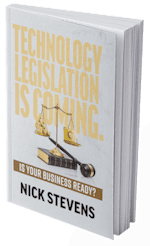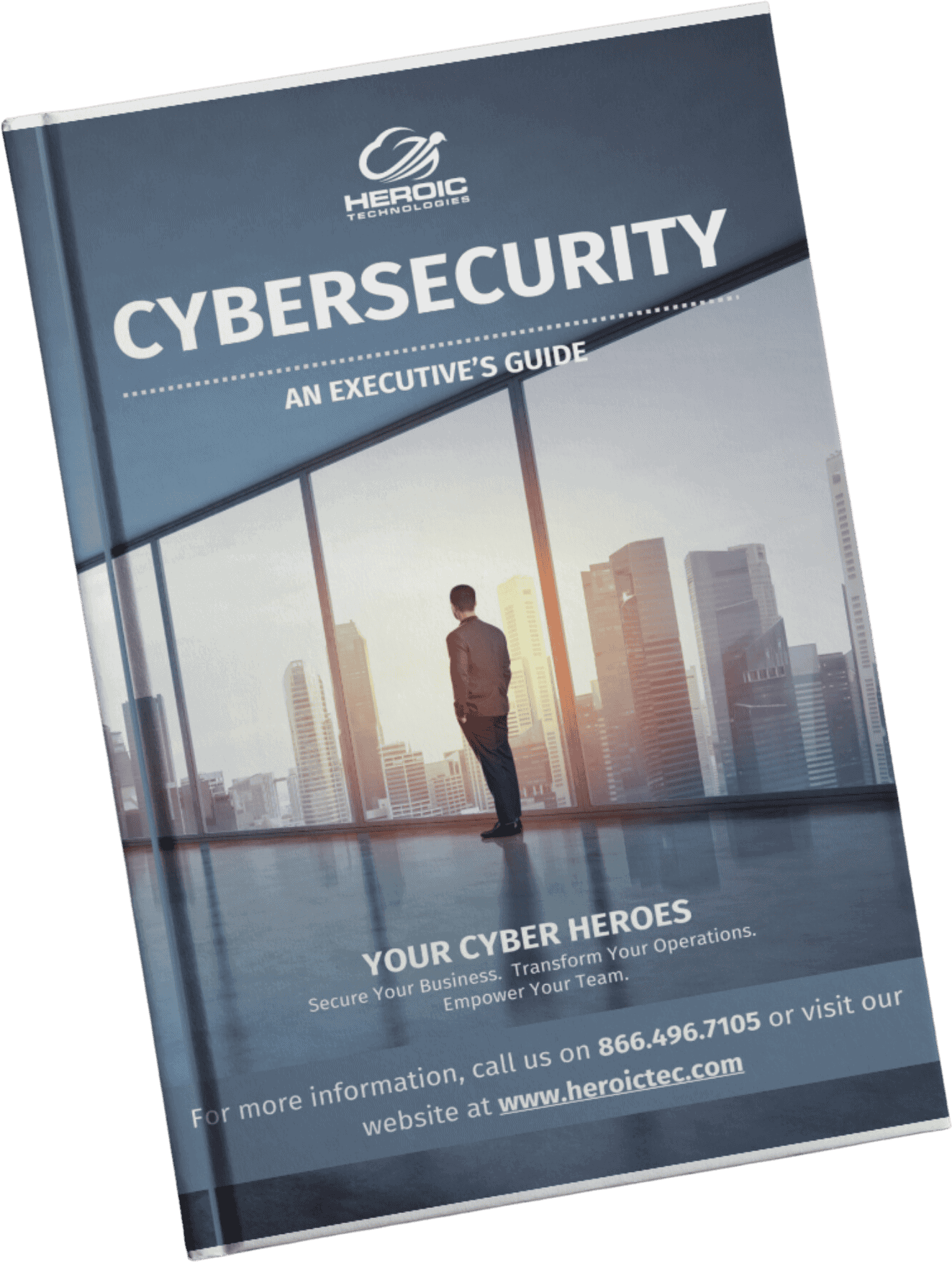Cybersecurity Isn’t Just for Techies Anymore—Why Technology Legislation Matters More Than Ever for Business Leaders

The Threats Have Changed—and So Must We
If you’re running a business today, odds are you’ve got a hundred things on your plate—growth, operations, financials, people. I get it. I’ve been there too.
But there’s one more thing that’s quietly becoming just as critical as any of those: cybersecurity. Or more specifically, the growing body of Technology Legislation that’s reshaping how businesses operate and how leaders are held accountable when things go wrong.
That’s what led me, Nick Stevens—CEO of Heroic Technologies and a Virtual Chief Information Security Officer (vCISO)—to co-author a new book alongside several other cybersecurity experts. It’s written for people like you: CEOs, CFOs, COOs, compliance leads, risk owners, and IT managers who want to do the right thing, protect their businesses, and stay competitive without getting lost in technical jargon.
The book recently hit Amazon’s bestseller list, and major news outlets like the Associated Press and KOIN6 in Portland took notice. That kind of traction tells me one thing: this conversation is long overdue.
So What’s the Big Deal About Technology Legislation?
Remember when cybersecurity felt like a “tech department” problem? Those days are gone.
Today, businesses of all sizes are dealing with a flood of new regulations—some local, some global—all centered around how we collect, store, and protect data. Whether it’s the SEC’s cybersecurity disclosure rules, GDPR, or the FTC’s Safeguards Rule, Technology Legislation is now deeply woven into how we run businesses.
This isn’t fear-mongering. It’s reality. If your organization suffers a breach and it turns out you didn’t have proper protections—or worse, didn’t report it correctly—you could be on the hook financially and legally. That includes reputational damage that could take years (and millions) to rebuild.
The takeaway? Compliance isn’t just for the legal team. It’s part of leadership now.
A Look Back to Understand Where We Are Now
In my chapter of the book, I talk about how far we’ve come in the world of cyber threats.
In the early 2000s, most of the “threats” were pop-ups, spyware toolbars, and sketchy emails your grandma might click. Annoying? Yes. Devastating? Not really.
Fast forward to today, and we’re seeing:
- Ransomware that can shut down hospitals, schools, and Fortune 500 companies.
- Supply chain attacks where a single vendor compromise can ripple across hundreds of businesses.
- AI-generated phishing emails that look so real, even tech-savvy employees fall for them.
- And deepfakes and synthetic identity fraud, where hackers can literally fake your voice or face.
The stakes are higher now. And the scary part? Many small and midsize businesses are still approaching cybersecurity with 2005 tactics.
Compliance Isn’t Optional Anymore—It’s Strategic
Let me be real with you: I’m not the type to throw acronyms and frameworks at you for the sake of sounding smart.
But if your business hasn’t had a serious conversation about business security and compliance in the last year—or you’re not sure what your responsibilities are under the latest regulations—you could be skating on thin ice.
Some things to ask yourself:
- Do we have a written incident response plan?
- Are we vetting our vendors properly?
- Would we be able to report a breach within 72 hours if one happened tomorrow?
- Are we doing regular risk assessments—or just hoping our antivirus software is enough?
These questions aren’t just good practice—they’re being written into law. And regulators are no longer just focused on big companies. If you handle sensitive customer data (and who doesn’t these days?), you’re in the spotlight too.
Why We Wrote the Book (And Why It’s Different)
This book isn’t a checklist. It’s not a technical manual. It’s a real-world guide written by people who have helped organizations—from startups to enterprises—prepare for, recover from, and prevent cyber incidents.
Each chapter gives you a window into a different aspect of this evolving landscape—from legislation trends to practical strategies for building smarter, stronger security programs.
My chapter sets the stage with a historical view: how cyber threats have shifted and how that shift has driven the wave of laws we’re now navigating. It’s high-level on purpose—because if you’re like most business leaders I work with, you need clarity, not code snippets.
What to Do Next: A Friendly Push from a vCISO
I work as a vCISO with organizations that want to take cybersecurity seriously but don’t need (or can’t afford) a full-time Chief Information Security Officer. That means I help businesses like yours build tailored security and compliance programs—from risk assessments to policy design to board-level reporting.
Whether you read the book or just start asking better questions internally, here’s my encouragement to you: don’t wait for a breach to get serious about security. The cost—financially, legally, and emotionally—is far too high.
Technology legislation isn’t slowing down. And if we want to keep our businesses strong, our reputations intact, and our customers’ trust, we need to get ahead of it—not play catch-up after it’s too late.







